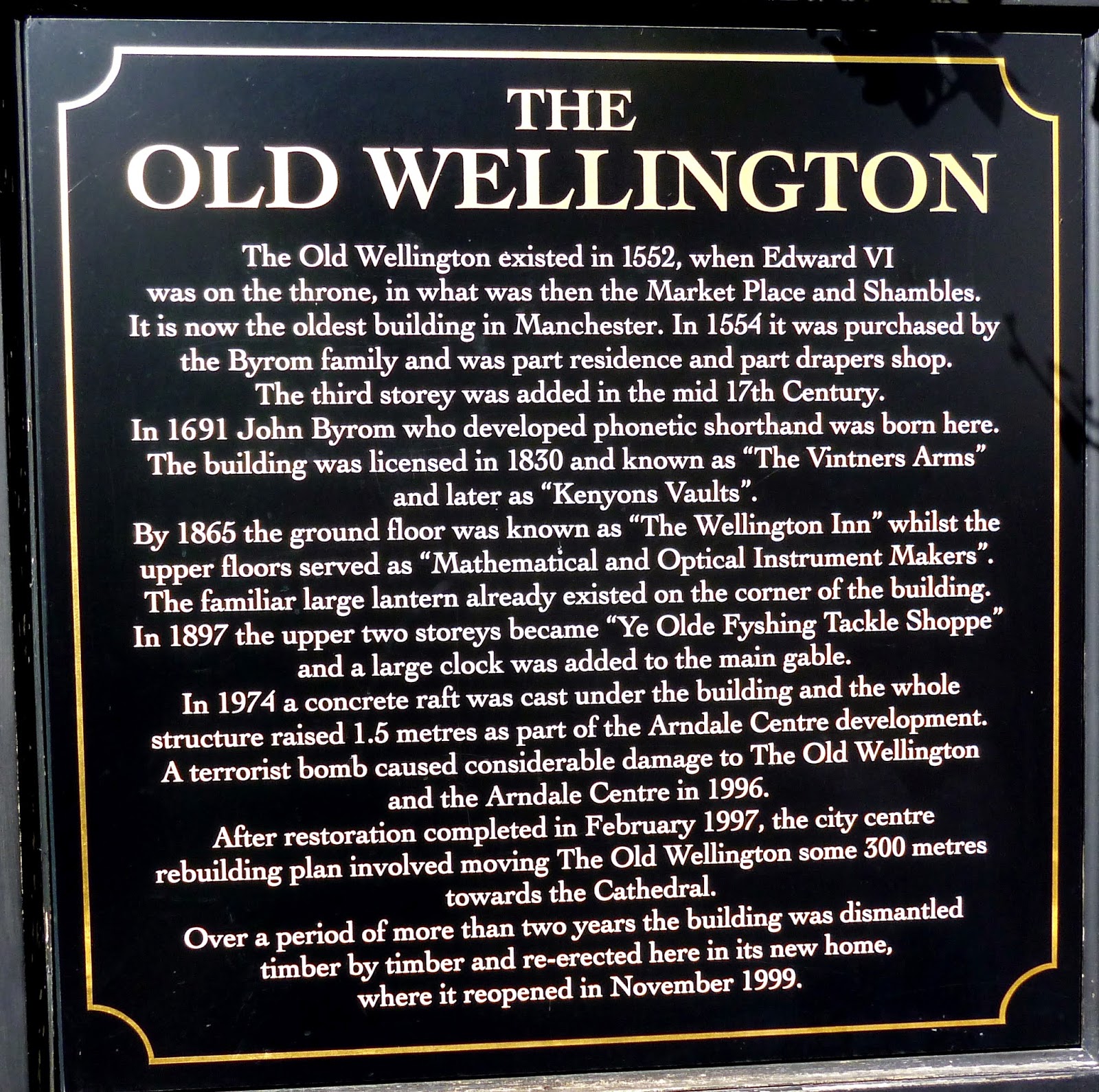'THE
OLD WELLINGTON
The Old Wellington existed in 1552, when Edward VI was on the throne, in what was then the Market Place and Shambles. It is now the oldest building in Manchester. In 1554 it was purchased by the Byrom family and was part residence and part drapers shop.
The third storey was added in the mid 17th century.
In 1691 John Byrom who developed phonetic shorthand was born here.
The building was licensed in 1830 and known as 'The Vintners Arms'
and later as 'Kenyons Vaults'.
By 1865 the ground floor was known as 'the Wellingont Inn' whilst the upper floors served as 'Mathematical and Optical Maker'.
The familiar large lantern already existed on the corner of the building.
In 1897 the upper two storeys became 'Ye Olde Fyshing Tackle Shoppe' and a large clock was added to the main gable.
In 1974 a concrete raft was cast under the building and the whole structure raised 1.5 metres as part of the Arndale Centre development.
OLD WELLINGTON
The Old Wellington existed in 1552, when Edward VI was on the throne, in what was then the Market Place and Shambles. It is now the oldest building in Manchester. In 1554 it was purchased by the Byrom family and was part residence and part drapers shop.
The third storey was added in the mid 17th century.
In 1691 John Byrom who developed phonetic shorthand was born here.
The building was licensed in 1830 and known as 'The Vintners Arms'
and later as 'Kenyons Vaults'.
By 1865 the ground floor was known as 'the Wellingont Inn' whilst the upper floors served as 'Mathematical and Optical Maker'.
The familiar large lantern already existed on the corner of the building.
In 1897 the upper two storeys became 'Ye Olde Fyshing Tackle Shoppe' and a large clock was added to the main gable.
In 1974 a concrete raft was cast under the building and the whole structure raised 1.5 metres as part of the Arndale Centre development.
A terrorist bomb caused considerable damage to The Old Wellington and the Arndale Centre in 1996.
After restoration completed in February 1997, the city centre rebuilding plan involved moving The Old Wellington some 300 metres towards the Cathedral.
Over a period of more than two years the building was dismantled timber by timber and re-erected in its new home, where it reopened in November 1999.'
After restoration completed in February 1997, the city centre rebuilding plan involved moving The Old Wellington some 300 metres towards the Cathedral.
Over a period of more than two years the building was dismantled timber by timber and re-erected in its new home, where it reopened in November 1999.'
Byrom died in 1763, spending his later years in Stockport.





No comments:
Post a Comment